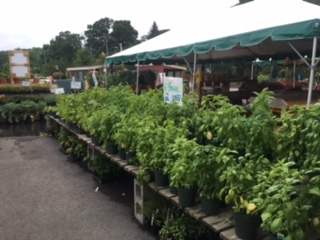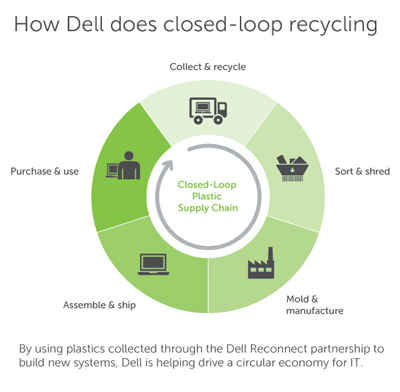For residents of Lexington, MA and beyond, Wilson’s Farm is more than a shopping destination: it is an experience.
An attempt to drive by the Wilson’s Farm parking lot during peak hours is a perfect illustration of how  popular this local gem has become (hint- it takes a while). The Wilson family has owned and operated their business for 132 years and counting, which includes 26 acres of farmland in Lexington (and 600 additional acres in New Hampshire). The farm as a whole cultivates 125 different crops including corn, beans, squash, tomatoes, strawberries and more. My own childhood often included trips to the barn while my mother shopped so I could say hello to the pigs, chickens, goats and other animals that live at Wilson’s. Shelves lined with fresh, colorful, locally produced crops serve as evidence that the best foods are grown close to home. On top of a thriving business, events year-round keep the community engaged with the farm including haunted hayrides during Halloween and bi-weekly farm tours during the summer.
popular this local gem has become (hint- it takes a while). The Wilson family has owned and operated their business for 132 years and counting, which includes 26 acres of farmland in Lexington (and 600 additional acres in New Hampshire). The farm as a whole cultivates 125 different crops including corn, beans, squash, tomatoes, strawberries and more. My own childhood often included trips to the barn while my mother shopped so I could say hello to the pigs, chickens, goats and other animals that live at Wilson’s. Shelves lined with fresh, colorful, locally produced crops serve as evidence that the best foods are grown close to home. On top of a thriving business, events year-round keep the community engaged with the farm including haunted hayrides during Halloween and bi-weekly farm tours during the summer.
Spotlight: Jim Wilson
 For Jim and his family, sustainability has been a way of life for four generations. Jim has worked on the farm for his entire life, starting before he was even old enough to cross the street on his own. Though his role has shifted more toward the office and administration side of the business, he is still inspired daily by the changing fields and bountiful harvests that they yield. Jim credits proximity to Boston and an ever-growing population with keeping the farm alive, especially during a time when mega-farms seem to be trumping the industry. The Wilson’s have been doing local farming since before it was “cool”, managing not only to achieve environmental sustainability but economic sustainability as well.
For Jim and his family, sustainability has been a way of life for four generations. Jim has worked on the farm for his entire life, starting before he was even old enough to cross the street on his own. Though his role has shifted more toward the office and administration side of the business, he is still inspired daily by the changing fields and bountiful harvests that they yield. Jim credits proximity to Boston and an ever-growing population with keeping the farm alive, especially during a time when mega-farms seem to be trumping the industry. The Wilson’s have been doing local farming since before it was “cool”, managing not only to achieve environmental sustainability but economic sustainability as well.
“I’ve known many people who are great farmers, but terrible businessmen.” -Jim Wilson
Jim has always known how to steward land to ensure that it stays productive year after year. He  incorporates compost from his food waste for soil health, diversifies his crops, and pays close attention to daily weather patterns to fully monitor the behavior of the farm. Without these essential practices, Wilson’s would cease to exist. Jim emphasizes that economic sustainability has been the key to the farm’s success all of these years. This mindset is what has set his farm apart from the countless others that have unfortunately gone out of business in the Massachusetts and New England areas. By keeping the produce high quality and customers happy, Wilson’s has cultivated a sustaining business that has become deeply ingrained in the Lexington community.
incorporates compost from his food waste for soil health, diversifies his crops, and pays close attention to daily weather patterns to fully monitor the behavior of the farm. Without these essential practices, Wilson’s would cease to exist. Jim emphasizes that economic sustainability has been the key to the farm’s success all of these years. This mindset is what has set his farm apart from the countless others that have unfortunately gone out of business in the Massachusetts and New England areas. By keeping the produce high quality and customers happy, Wilson’s has cultivated a sustaining business that has become deeply ingrained in the Lexington community.
Being part of the Wilson’s Farm team requires extraordinary hard work and drive. A day in the field is no easy task, but the workers both on the farm and in the store learn a great deal about what it means to run a successful business.
 In addition to the physical labor involved in keeping a farm going, Jim and his team are constantly up against strict governmental regulations and interventions that do not cater to small businesses. Rules that are streamlined for industrial farms do not translate well to family-owned ones, making it increasingly difficult for Wilson’s to operate in the manner that they have been for decades. Nevertheless, Jim and his family have a unique tenacity that has enabled this small farm to survive in the face of big agriculture despite a less-than-accommodating market.
In addition to the physical labor involved in keeping a farm going, Jim and his team are constantly up against strict governmental regulations and interventions that do not cater to small businesses. Rules that are streamlined for industrial farms do not translate well to family-owned ones, making it increasingly difficult for Wilson’s to operate in the manner that they have been for decades. Nevertheless, Jim and his family have a unique tenacity that has enabled this small farm to survive in the face of big agriculture despite a less-than-accommodating market.
(To our readers: Have you seen or experienced examples in which such government regulations have been beneficial to both small and large businesses? What can be done to create more harmony between the two?)
Why do we care?
Here at Earthos, we want to highlight local businesses doing their part to improve the bioregion by aligning human and natural systems. We believe that such practices contribute to resilient and sustainable communities. Wilson’s has worked within its ecosystem to create not just environmental sustainability, but economic and social as well. All key resources (water, people, land, energy, biodiversity, food and waste) are incorporated into this farm’s practices in innovative ways that utilize them to their fullest potential. As local farms seem to dwindle in the shadow of highly productive mega-farms, Wilson’s has stood strong in its mission to provide its customers with nutritious food grown close to home.
Earthos is inspired by what we have seen at Wilson’s Farm. Big thank you to Jim Wilson for showing us around and sharing his experience with us- it was truly a treat to see how this local farm has impacted the community!
Written by Earthos Intern Lauren Jackson
 Dell illustrates how their closed-loop recycling system turns uses materials from old computers to create new ones.
Dell illustrates how their closed-loop recycling system turns uses materials from old computers to create new ones. adults have taken to the streets to “catch ’em all” using this new interactive app that requires users to move about their physical surroundings in order to catch Pokemon and battle other trainers. The game has taken the world by storm, and has become the object of both high praise and intense scrutiny. While many arguments exist for both sides, our blog seeks to unpack the pros and cons of using a video game to explore and experience a bioregion.
adults have taken to the streets to “catch ’em all” using this new interactive app that requires users to move about their physical surroundings in order to catch Pokemon and battle other trainers. The game has taken the world by storm, and has become the object of both high praise and intense scrutiny. While many arguments exist for both sides, our blog seeks to unpack the pros and cons of using a video game to explore and experience a bioregion.